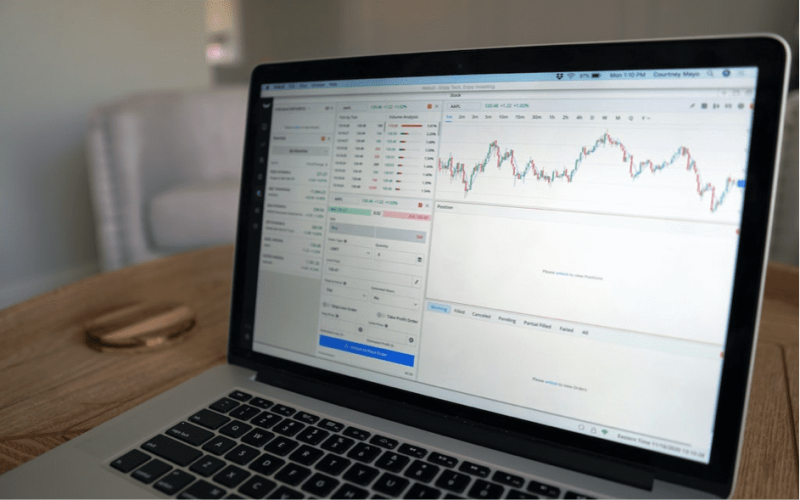
Google's parent company, comes with two different symbols in the stock market – GOOG and GOOGL, also known as Alphabet's Class. Class C stock with the ticker GOOG and Class A stock with the ticker GOOGL.
That's not entirely the case. Although there is a third class of Alphabet stock, the Class B shares are not offered to the general public.
It is not immediately clear what sets these Alphabet stock classes apart. Following Google's search algorithm, individuals looking for information on GOOGL stock frequently enquire about the distinction between Class A and Class C and the better investment.
So let's quickly examine this graceful predicament.
Also Read: 11 Best AI stocks
Contents
- Why There Are Different Classes Of Stocks
- The Difference Between Class A And Class B Shares
- Example Of Class A, B, And C Shares
- Bottom Line
- FAQs
Why There Are Different Classes Of Stocks
When a business issues shares, it raises money by selling a portion of its ownership, either in private to a select group of potential owners or on the open market to virtually anyone.
Absent special agreements, the google shareholders of the corporation own a portion of the corporation's total assets and profits. In proportion to the number of shares each person owns, they also have voting rights.

Companies must expose their governance and assets to the market when they sell stock to raise money from investors. The majority, if not all, limit the number of shares they release to accept this risk or to reduce it. Others, on the other hand, react by designating multiple share classes of shares to guarantee that voting rights remain in particular hands.
The Difference Between Class A And Class B Shares
A business could theoretically have as many classes of common stock as it wants. The choice is typically made to concentrate the vote's weight among a particular group.
Companies typically designate the two classes of stock they offer as Class A and Class B, with Class A shares having more voting rights than Class B shares.

It only grants one voting power per share, whereas class A shares may grant ten. It depends on the company's choice of stock structure.
Class A Shares
Class A shares, like the vast majority of the shares issued by a public company, are common stocks. Ordinary shares are an ownership stake in a business that entitles holders to a share of the company's profits.
Common shareholders typically receive at least one vote for each share they own. This gives the owners the right to cast a ballot at annual meetings where the board is chosen, business decisions are made, and shareholders can express their concerns.
Many companies decide to only distribute Class A shares to those they want in voting power, such as management, due to the increased voting power in Class A shares. In the event of a hostile takeover, it may also keep its voting shares.

There are various kinds of Class A shares. Traditional Class A shares, Class A shares related to technology, and expensive Class A shares are all available.
Class B Shares
Payment priority for Class B shares is lower than for Class A shares. As a result, Class A shareholders would be compensated ahead of Class B shareholders if a company faced bankruptcy and was forced into liquidation.
It may be issued for purposes other than those of the corporation and its executives. For instance, the Class A shares of a company might be worth hundreds of thousands of dollars. Because many investors won't afford a Class A share, the company may issue Class B stock at a significantly lower price. It greatly increases the accessibility of investing in the business.
Class B Stock Vs. Class C Stock
You will be charged a fee when you sell your Class B shares. While class C shares charge a fee for holding them, such as 0.5% of the share's value per period.
A “back-end load,” also known as a “contingent deferred sales charge,” is levied by Class B share funds (CDSC). In contrast to class A shares, you must pay a percentage of the share price when purchasing these shares. You don't pay any fees up ahead; instead, you pay them after the sale.
Fortunately, the back-end load continuously decreases while you retain the fund, and finally, it reaches zero. The “12b-1 fee” that B share funds typically charge, which raises costs, is one disadvantage of these funds.

12b-1 fees are paid from the assets of mutual funds or ETFs to pay the costs of distribution (promoting and selling mutual fund shares) and occasionally to cover the costs of providing shareholder services. The SEC rule that permits an investment fund to impose 12b-1 fees gave them their name.
As long as you maintain a Class C share fund, there will be a recurring fee, such as 1% annually. This price is referred to as a “level load.” As a result, the fund's expenses rise, lowering returns over time. These shares might charge 12b-1 fees as well.
Also Read: The 2 Major Stock Order Types-Explained
Example Of Class A, B, And C Shares
Google stock has three types of shares: A, B, and C. The founders kept the Class B shares with the right of 10 votes per share, while the company issued Class A shares with one vote for each share when it first went public. This goal was to maintain the founders' ownership of the business.
However, as more Class A shares were issued as stock options and payment for acquisitions, the founders' control over the company gradually began to wane.
As a result, Google stock split in 2014, whereby holders of the A and B shares would each receive one new share of the C-class stock. Shares of Class C are non-voting. This made it possible to issue more stock and for the founders to sell their newly issued C-class shares without doing anything to alter their ability to control the company.

The market doesn't appear to have objected to the treble class share structure nearly ten years after it caused quite a stir at the time for being shareholder unfriendly. In actuality, the A and C shares (B isn't traded) have frequently traded at almost the same price, and the non-voting C class has typically traded at a premium when they have diverged.
Bottom Line
If you choose to invest in a public business that has various share classes, it might be challenging to select the investment class that is ideal for you. Beyond market value, knowing how the stock will fit into your entire investment strategy and your investing philosophy will help you decide which share class is suitable for you.
A stock class without voting rights is an option for investors searching for shorter-term investments. The share classes with voting rights may be preferred by other investors who desire to participate actively in corporate governance. Additionally, some investors might be looking for equities that offer assured dividends, which could influence their choice of a particular share class. You can get pointed in the right direction by discussing your portfolio goals with a financial advisor.
FAQs
Which is Better, Google Class A or C?
The distinction is whether or not the shares have voting rights. GOOGL's shareholders have the right to cast ballots on corporate issues because it is a Class A common stock. GOOG is a Class C stock without voting privileges.
What Is the Difference Between the Class A and Class C Alphabets?
Alphabet is Google's parent company and offers two shares with slightly differing ticker symbols on its shares. GOOGL shares are its Class A shares. GOOG shares are type C shares.
What Is the Difference Between the Alphabet A and C shares?
Under the ticker GOOGL, Class A stock is traded on the NASDAQ Global Select Market. Under the ticker GOOG, Class C stock is traded on the NASDAQ Global Select Market.
Should I Buy Class A or Class C Shares?
The shares of the A class are denoted by the symbol GOOGL and have one vote, while the claims of the C class are characterized by the GOOG and have no voting rights at all. Other than voting rights, there is no reason to favor one share over the other because they both have the same economic interest in Google's business.















